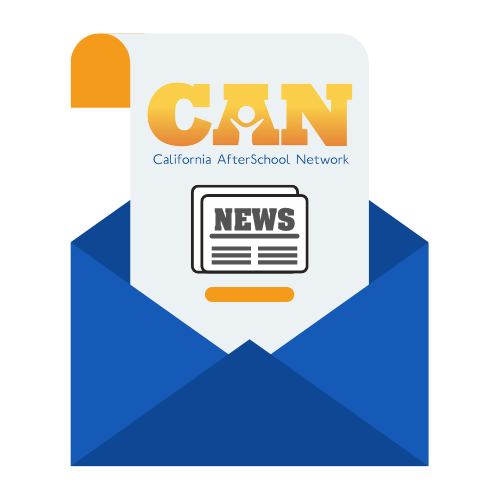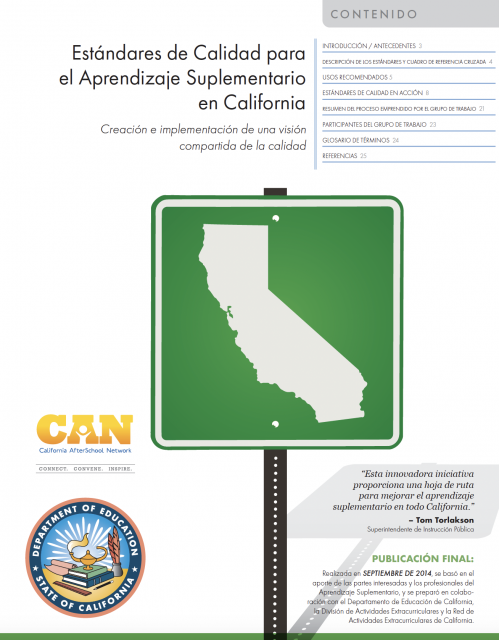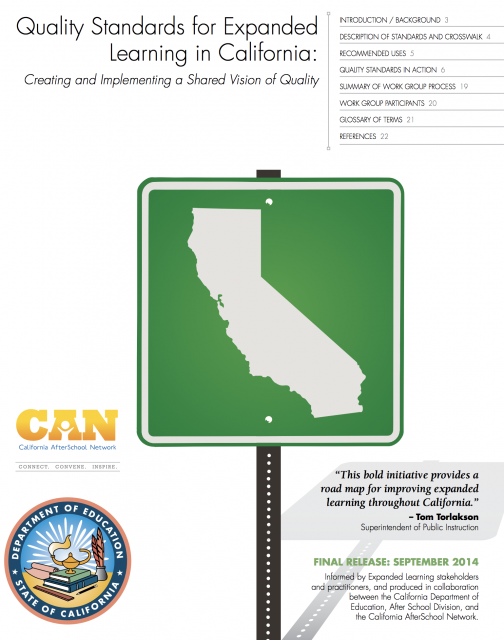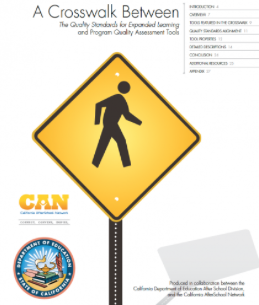The Quality Standards for Expanded Learning
Spanish Quality Standards Now Available!
We have translated the Quality Standards into Spanish! We would like to give special thanks to Suzanne Hill and the Orange County Office of Education for translating the language for the Quality Standards.
The purpose of the Quality Standards is to describe high levels of “Quality” of a program at the programmatic, staff, and participant levels. The quality standards are not intended to serve as a compliance tool, but as the following:
- A framework of clear expectations for all stakeholders.
- A guide to inform the After School Division’s decision-making, e.g., technical assistance decisions, language in requests for application, and policy development.
- A guide for program providers to assess their own programs in order to help determine what they are doing well and what needs improvement.
The Quality Standards for Expanded Learning in California
The purpose of the Quality Standards is to describe high levels of “Quality” of a program at the programmatic, staff, and participant levels. The quality standards are not intended to serve as a compliance tool, but as the following:
California After School Program Quality Self-Assessment Tool
Released in 2009
This version of the California Afterschool Program Quality Self-Assessment Tool (QSA) and User’s Guide was released in 2009. Programs can use this tool to self-assess their program and make plans for program improvement. The tool focuses on big-picture program design elements and important considerations at the point of service.
Please note that an updated version called the Quality Assessment Tool (QAT) will be released soon. See the post below for details.
A Crosswalk Between The Quality Standards for Expanded Learning and Program Quality Assessment Tools
The Crosswalk is a report that includes a review of seven tools that assess program quality in the field at both the point-of-service level and the programmatic management level. This report centers around a matrix indicating the degree to which each tool supports assessment of the Quality Standards.





